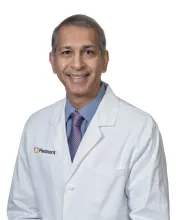Educating patients about their treatment options for severe symptomatic aortic stenosis (AS), especially in the context of complex medical procedures such as transcatheter aortic valve replacement (TAVR) and surgical aortic valve replacement (SAVR), is a critical component of quality patient care. Patients who are well-informed about their treatment options are better equipped to make decisions that align with their values, preferences, and lifestyle, which can lead to adherence to treatment plans and better health outcomes.

The TAVR vs. SAVR debate is dynamic and influenced by continuous research and technological advancements. Valve heart teams, including cardiothoracic surgeons, must be well-versed in patient selection criteria; understand the implications of long-term outcomes and valve durability in young, low-risk patients; and keep abreast of technological innovations to guide patients effectively through these treatment choices.
Long-Term Survival After SAVR
Survival After Surgical Aortic Valve Replacement in Low-Risk Patients: A Contemporary Trial Benchmark, a study published in The Annals of Thoracic Surgery in October 2023, demonstrates that low-risk patients undergoing SAVR have excellent long-term survival rates, setting a new benchmark for outcomes in the treatment of severe AS. It emphasizes the importance of long-term data and provides real-world evidence to complement clinical trial results.
All patients in the study were classified as low risk for SAVR mortality as defined by the STS predicted risk of operative mortality (PROM ≤ 4%). According to the findings, survival rates after SAVR were excellent, with 93% of patients living for at least five years after the procedure. This contemporary information can help doctors better understand and compare the outcomes of SAVR and TAVR when considering which treatment is best for patients who are low risk for surgery.

“This study sets a benchmark for outcomes for the management of aortic valve stenosis,” said Vinod Thourani, MD, Bernie Marcus Chairman of Cardiovascular Surgery and the Marcus Valve Center, Piedmont Heart Institute, Atlanta, GA, who performs both SAVR and TAVR procedures. “The analysis is significant because of the longitudinal follow-up with very large numbers of patients, and it is an important complement to results from randomized clinical trials with commonly measured primary endpoint at one year.”
Advancements in TAVR
On the other hand, TAVR also has expanded the treatment landscape for severe AS and has allowed more patients to get treated for this deadly disease. Initially approved for high-risk patients, particularly elderly patients and those with multiple comorbidities, TAVR has been extended as an option for intermediate and low-risk patients.
The PARTNER 1, 2, and 3 trials, along with the Evolut High, Intermediate, and Low Risk trials, have collectively increased the indications for TAVR from high-risk to intermediate and low-risk patients. These trials have shown that TAVR is associated with lower immediate procedural risks and comparable long-term survival rates to SAVR in select patient populations.
Given the highly selected cohorts of these carefully adjudicated industry-sponsored trials, STS and the European Association for Cardio-Thoracic Surgery (EACTS) challenged the findings in a joint statement. They suggest that “some of the statements made were appropriately weighted with equipoise, but some were not,” and assert that “given that the fastest growing operation in the STS National Database over the last five years is TAVR explantation or surgery after TAVR, more follow-up time be given from the existing low-risk trials prior to embracing TAVR’s clinical utility in low-risk patients.”
STS and EACTS recommend “caution prior to adopting a TAVR-first strategy in young, low-risk patients, particularly those patients with characteristics not specifically studied in these low-risk trials.”
Comparative Outcomes and Key Considerations
The data from these recent studies suggest that both TAVR and SAVR have distinct advantages. The choice between TAVR and SAVR often hinges on patient-specific factors, including age, comorbidities, anatomical considerations, and surgical risk. The decision-making process should involve a multidisciplinary heart team approach to ensure that each patient receives the most appropriate treatment based on their profile.
The Path Forward
As the debate between TAVR and SAVR continues, ongoing research and technological advancements are expected to refine and enhance both treatments. “There is a pressing need for more well-designed trials to fill in the notable gaps in evidence,” said Dr. Thourani. “Concerns about how to manage younger patients throughout their lifetimes remain to be addressed.”
No doubt, the collaboration between cardiothoracic surgeons, cardiologists, and researchers is pivotal in developing guidelines and strategies that help determine the best treatment options for all patient populations and maximize patient outcomes.
Strategies for Effective Patient Communication
Because the choice between TAVR and SAVR is nuanced and patient-specific, effective patient communication is vital to delivering quality outcomes. Increased patient involvement in decision making leads to a better overall patient experience.

Joseph Cleveland Jr, MD, UC Health, understands the multifaceted challenges and critical considerations in ensuring patients are well-informed and actively involved in their treatment decisions, particularly in cases of severe AS. "Healthcare providers must work collaboratively with their patients when choosing the most appropriate treatment," he noted. “When patients are part of the decision-making process, they are better suited to accept the positive benefits as well as the risks and complications of the chosen treatment.”
Keeping a patient well informed and engaged in their treatment plan requires a multidisciplinary team approach, consisting of both the cardiothoracic surgeon and interventional cardiologist, especially if a patient is a candidate for both TAVR and SAVR therapies. According to Dr. Cleveland, “Face-to-face conversations with the patient, the cardiac surgeon, and the interventional cardiologist at the same time result in a fair, balanced presentation of information. These conversations reduce confusion and help the patient understand what to expect during and post procedure.”
Managing patient expectations is critical, particularly when the data they receive is incomplete or conflicting. Dr. Cleveland shared a scenario in which a patient had been advised to undergo TAVR and then was disheartened to learn that his anatomy was not suitable for the procedure.
Dr. Cleveland explained, “The patient came to me for a second opinion. He was already told that he should have a TAVR, but the data to support that was incomplete. Based on my experience, I didn’t think he had the appropriate geometry to fit a TAVR valve in his aortic annulus safely, whether it be a calcification pattern, disease pattern, or annular geometry. This case example underscores the importance of thorough diagnostics and transparent communication when deciding on a treatment plan.”
High-risk patients, often elderly with prior heart surgeries and elements of frailty, may require delicate discussions about treatment goals and the quality of life. High-burden symptoms, such as shortness of breath, severe fatigue, and heart arrhythmias, can restrict basic daily activities and make life uncomfortable. According to Dr. Cleveland, if patients aren’t careful, they wind up pursuing treatments they would never have chosen in the beginning or participating in treatments that diminish their quality of life in irreversible and regrettable ways.
Dr. Cleveland explained, "Conversations with high-risk patients should involve things like: What matters to you? What would a good day be like? What are your fears? And, what outcomes are unacceptable? For many patients, it’s more about giving them quality of life than years spent immobile or in and out of an ICU. It can be a tough discussion, but it’s an important one.”
As the caretaker for his father, a retired cardiac surgeon who faced heart failure in his later years, Dr. Cleveland gained a deeper understanding of patients as people, not just as recipients of care. “At 82 years old, my father could have had a biventricular pacemaker with defibrillator, but he didn't want it. He eventually took himself off beta blocker and warfarin for AFib and died at 85. I realized his goal was not to go to the hospital ever again. Even though I knew there were some things we could have done to add another two or three more years to his life, it wouldn’t have given him the kind of life he wanted.”
Asking questions about what is important to the patient, meeting them where they are, collaborating with a multidisciplinary care team, and building trust leads to a treatment plan and outcome that is best for the patient.